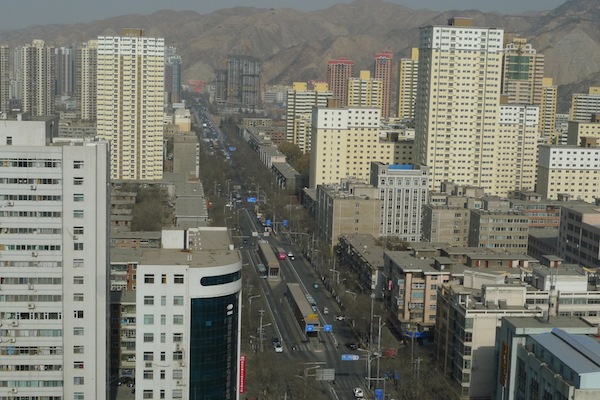By Karl Fjellstrom, ITDP China

Lanzhou, a city of three million and the capital of Gansu Province in north-western China opened its much-anticipated BRT system in late December. Lanzhou is Asia’s third ‘high capacity’ BRT system, after Guangzhou and Brisbane, and is the first BRT system in the world based on a split station concept with BRT buses in the same direction stopping on both sides of a platform. This innovative design offers roughly the same capacity as that of a traditional offset BRT station, but with half the station length and only one meter in extra width.
The Lanzhou system is the Asian Development Bank’s first BRT project to open. The ADB is loaning US$150 million toward urban transport in Lanzhou, most of which is supporting the BRT project and mixed traffic roadway infrastructure along the BRT corridor. ITDP played a central role from project formulation in early 2009 through the design and planning in 2010-2011, working closely with the Guangzhou Municipal Engineering Design and Research Institute (GMEDRI), who carried out the detailed engineering design. Daily ridership is 110,000 passenger trips per day, with more than 4,000 passengers per hour per direction at the peak point. Ridership figures are expected to increase substantially in the coming weeks as new buses and routes are added to the system.

When ITDP first visited Lanzhou in February 2009 the project was mainly focused on building utility tunnels and other roads, and featured a poorly designed, low grade median bus lane concept falling far short of even a ‘bronze’ BRT standard. ITDP together with GMEDRI and with the crucial support of ADB East Asia Transport Division officials succeeded in transforming the project into one focused primarily on a high capacity, high quality BRT corridor through the heart of Lanzhou’s Anning District. ITDP, working with GMEDRI, defined the station dimensions, station architecture, road design, intersection design, operational design, modal integration, and other key features of the project.
Lanzhou is also noteworthy as the first BRT project to open based on the direct demonstration impact of the Guangzhou BRT. Many more systems inspired by the Guangzhou BRT are in development, but Lanzhou is the first to open, following multiple visits to the Guangzhou BRT by dozens of senior officials from Lanzhou during 2009 (when Guangzhou was under construction) to 2012. As in Guangzhou, the Lanzhou BRT is a direct-service system, with BRT buses operating both inside and outside the corridor and BRT routes covering more than 100km of roadways outside the BRT corridor.

The 9km, 15-station, 6-route Lanzhou BRT features a variety of station types based on the corridor conditions, operational design, and passenger demand levels. Stations include single central platforms, split platforms with right-side boarding, and split platforms with both side boarding, and combinations of these approaches at the two biggest stations of Xi Zhan (West Railway Station) and Peili Guangchang. An initial fleet of fifty special 12-meter BRT buses with doors in both sides was procured, with 20 18-meter BRT buses going into operation from February first.
As expected, the system has experienced initial teething problems, especially related to the BRT operations which are still not yet sufficiently connected to the downtown area, but these problems are being addressed and city officials are already considering extensions. For more information on Lanzhou BRT, see these links for data, map, and additional photos.
